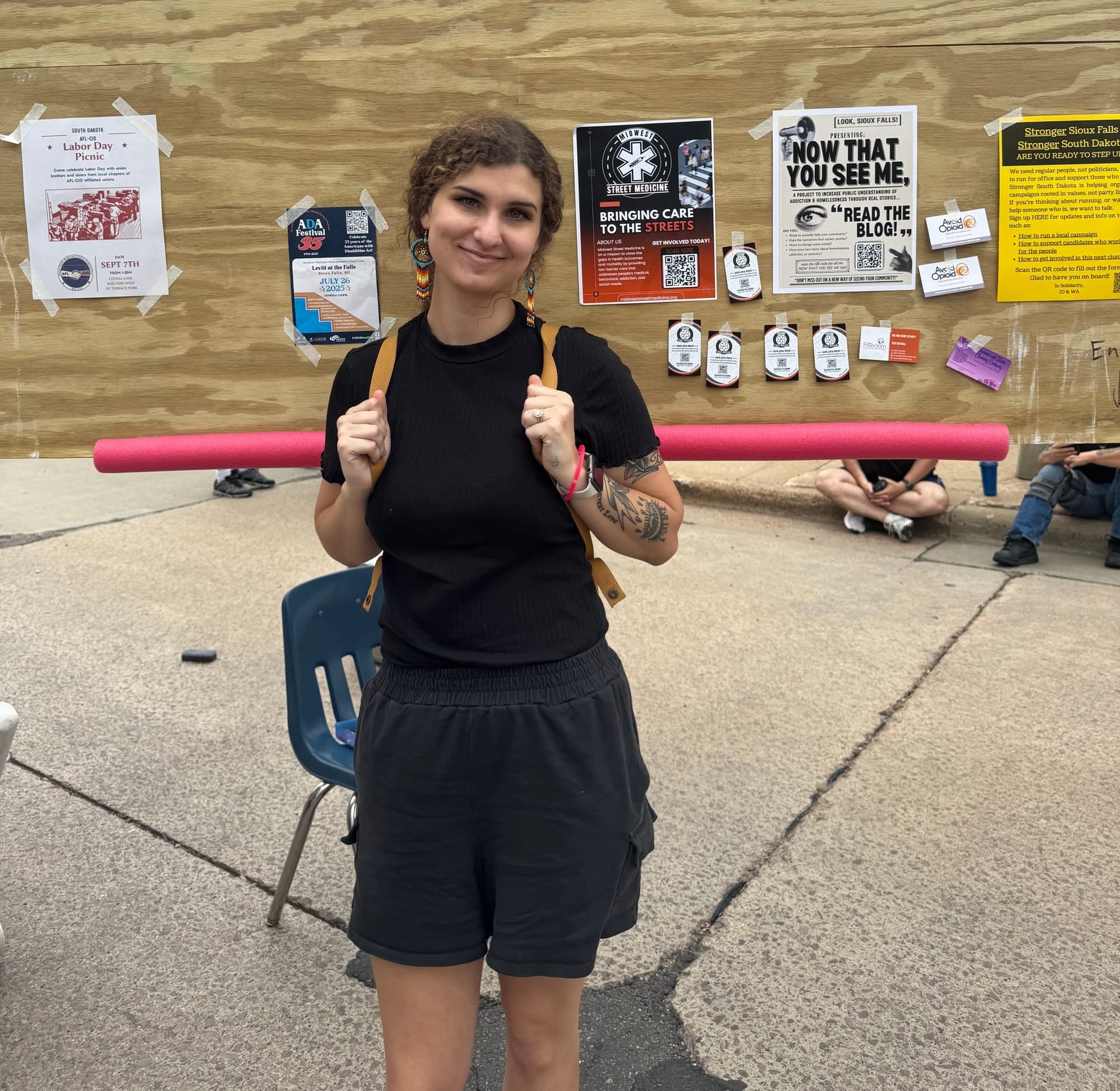Simplified: When people talk about homelessness in Sioux Falls, it's often seen or described as one big homogeneous issue. Jackie Barr is trying to change that narrative with a storytelling project to shine a light on the individual people who make up the unhoused community.
Why it matters
- Barr started working on her project, called "Now That You See Me," last winter, but her experience hanging out with folks who are unhoused dates back much farther.
- Growing up, Barr spent quite a bit of time with her grandmother, who helped create the Homeless Education Program in the Sioux Falls School District. She remembers tagging along for some of that work and playing with kids who, to her, were no different than herself.
- Today, Barr primarily connects with unhoused people through her internship with Midwest Street Medicine, a nonprofit bringing medical care directly to people who need it. She's also a student at the University of South Dakota pursuing a career in addiction counseling.
"She's out there doing the work that we need to happen to help people stay alive," said Mo Dittberner, cofounder of Midwest Street Medicine. "She's part of the solution – not the problem."
Tell me more
Barr said the idea for "Now That You See Me" came from her observation that, in general, when people talk about homelessness, they're talking about it as this big umbrella issue rather than talking acknowledging the individual stories.
- That makes it ultimately easier to ignore or dismiss the actual people who are struggling. Barr shared the example of the tension she observes when people don't know where to look when they see someone living on the streets or sleeping in the park.
"I think if we just see people and listen to them, this overall thing of homelessness, this cloud we just throw people in of just this is who you are – that whole perspective changes when you just talk to someone," Barr said.
Barr's process is to simply start by asking questions. She shared an example of helping a man find shoes that fit, and during the process asking him about his own personal story.
"I found that a lot of people just start talking about it because no one asks," she said. "It doesn't seem like anyone really cares. But it’s never like they chose to be here, or they're choosing to stay in this position."
In addition to sharing individual stories, Barr is also looking to demystify what homelessness actually looks like. She recently shared an article debunking common misconceptions about homelessness.
"Everybody has their own story," Dittberner said. "There's not one person (experiencing homelessness) where I could say, 'Oh yeah, that rings true for everyone.' It's not that cut and dry."
What happens next?
Barr plans to continue sharing individual stories of homelessness on her Substack. She also hopes by sharing these stories, it'll spur readers to feel more compassion.
"The narrative's never going to change if we don't listen," Barr said. "There are people that need to be seen. There are stories that need to be heard."
You can follow "Now That You See Me" here.


